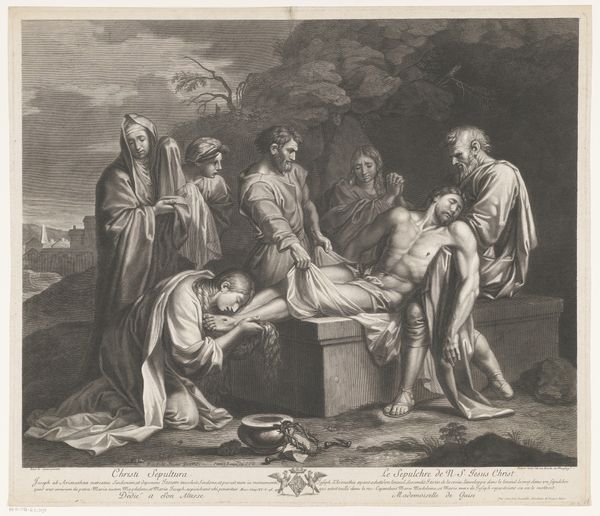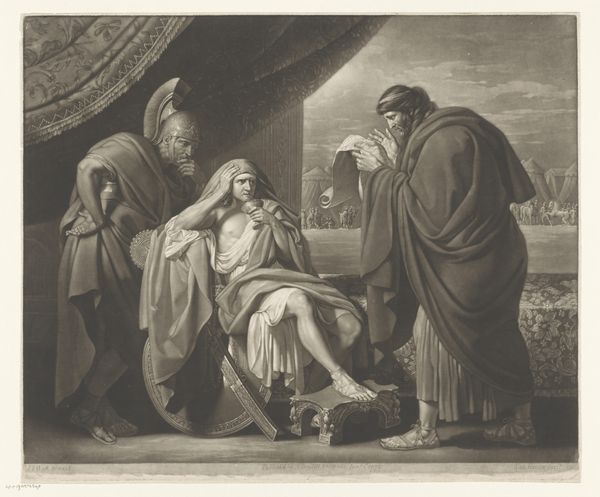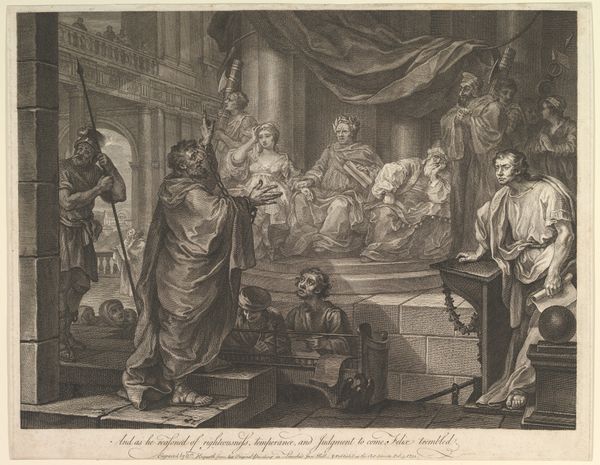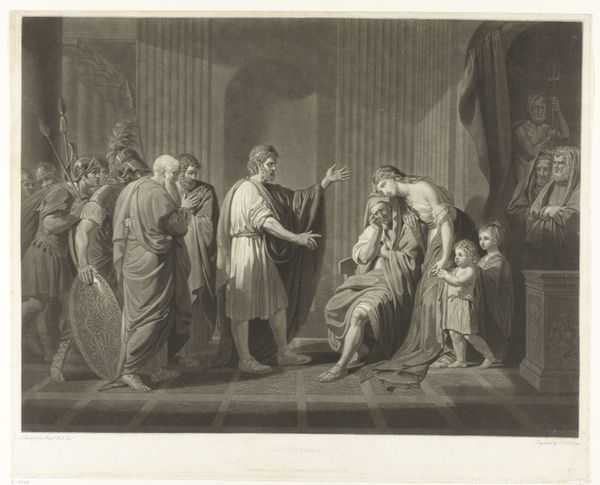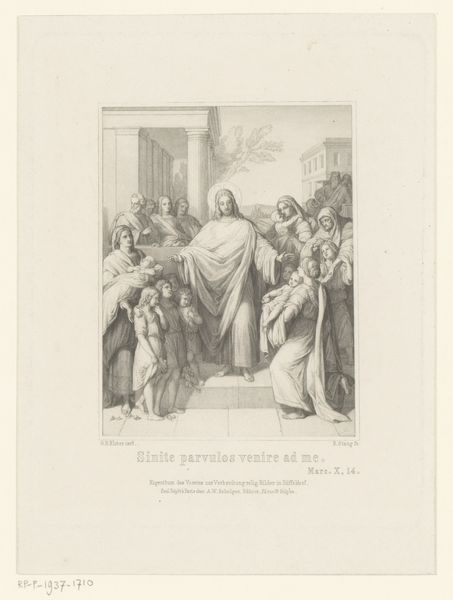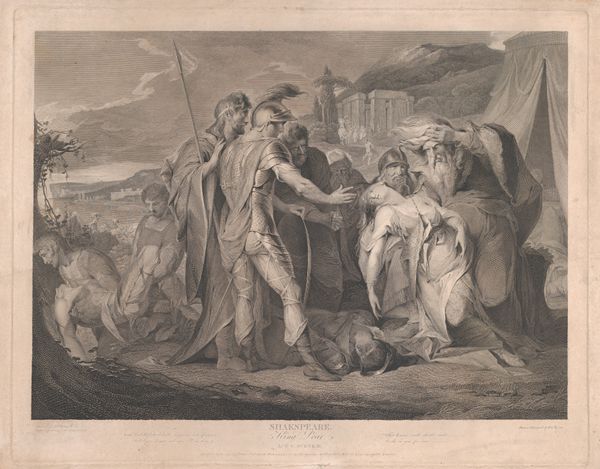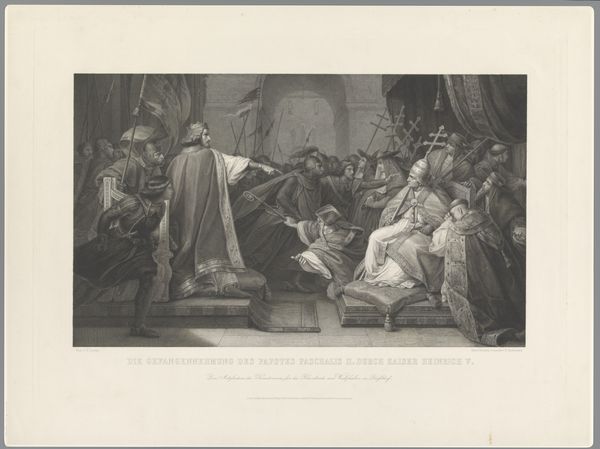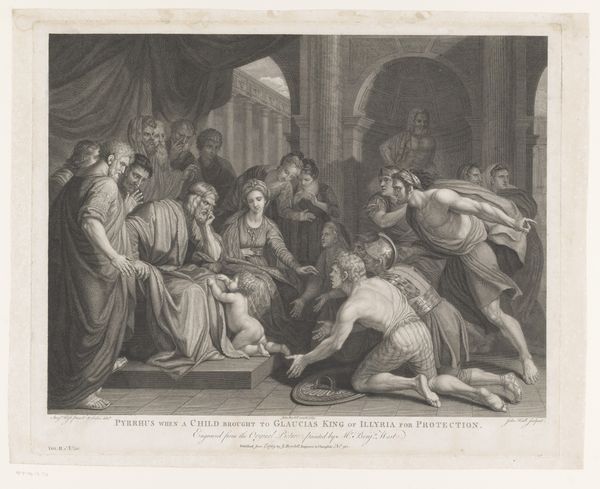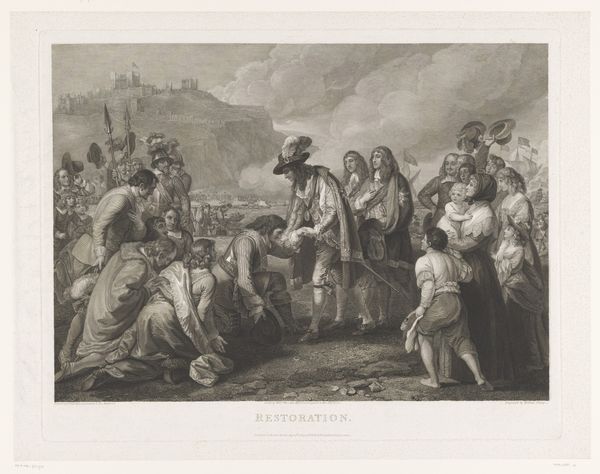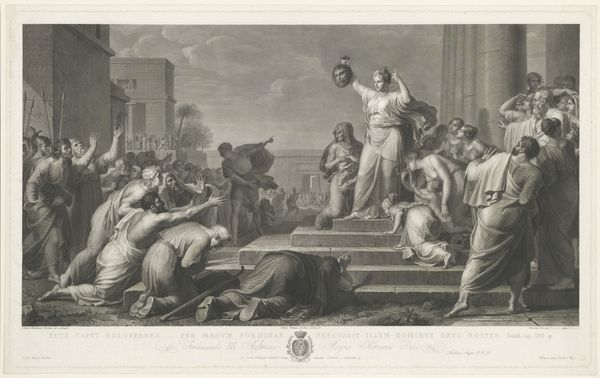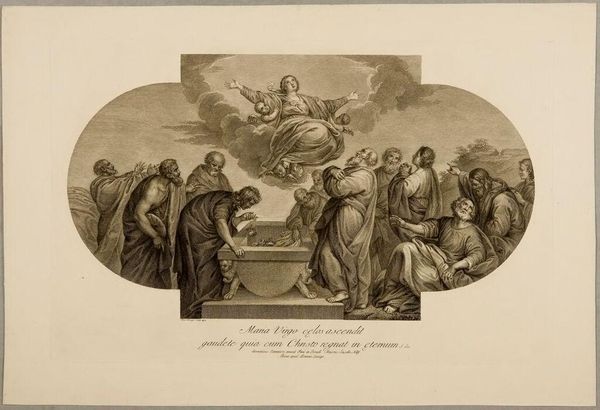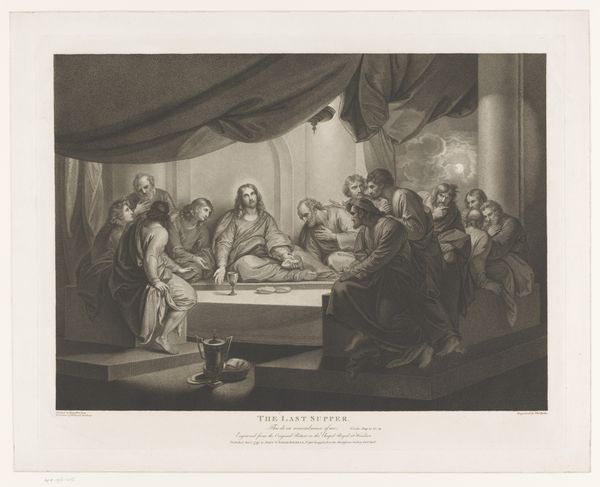
Dimensions: height 510 mm, width 659 mm
Copyright: Rijks Museum: Open Domain
Curator: Valentine Green’s engraving, made in 1777, depicts the biblical scene of Daniel interpreting the writing on the wall for Belshazzar. It's a stunning example of the neoclassicist movement, currently housed at the Rijksmuseum. Editor: Wow, talk about drama! It feels like the air is thick with tension. Belshazzar looks positively green himself, slumped on that throne. And that eerie glow on the wall... unsettling, isn't it? Curator: Indeed. Green’s use of engraving masterfully translates the dramatic narrative into print. The texture created from the engraved lines, layered to build tone and shadow, reflects a keen understanding of printmaking as a means of both artistic expression and commercial reproduction. How do you view its commentary on power? Editor: It’s hard not to see the commentary, isn’t it? Belshazzar is surrounded by luxury, dripping in ornamentation, but rendered powerless by a message he cannot decipher. He relies on Daniel, a man dressed in much simpler robes. To me, it highlights the transient nature of earthly power versus the enduring strength of knowledge and spiritual insight. I think there's a great feeling that all of those robes and jewelry amount to nothing when reality intrudes. Curator: Absolutely, and the print medium itself plays into this theme. Engravings allowed for the wide dissemination of moral tales, bringing grand narratives from religious and historical sources to a broader audience, potentially influencing social and political thought of the period. Editor: Right, and that reproducibility also affects our interpretation. Thinking about how the piece becomes less about its inherent uniqueness, it has this element of cultural utility, this capacity to endlessly spread across countless places. Almost like the ominous text that the print represents: always replicable, with endless consequences. Curator: An astute observation. Thinking about materiality of the ink, paper, and press, it all points towards a production deeply enmeshed with cultural, societal, and economic infrastructures of the era. Editor: It does make you think. Here is this permanent object capturing such a fleeting moment, this intersection of divine warning and mortal anxiety. Green managed to immortalize an intense feeling on a reproducible page. Curator: Yes. The dialogue between material process and artistic expression offers profound layers of meaning in Green’s engraving. Editor: It's given me a lot to ponder—how art can distill raw human fear and turn it into something we can hold in our hands. Literally!
Comments
No comments
Be the first to comment and join the conversation on the ultimate creative platform.
